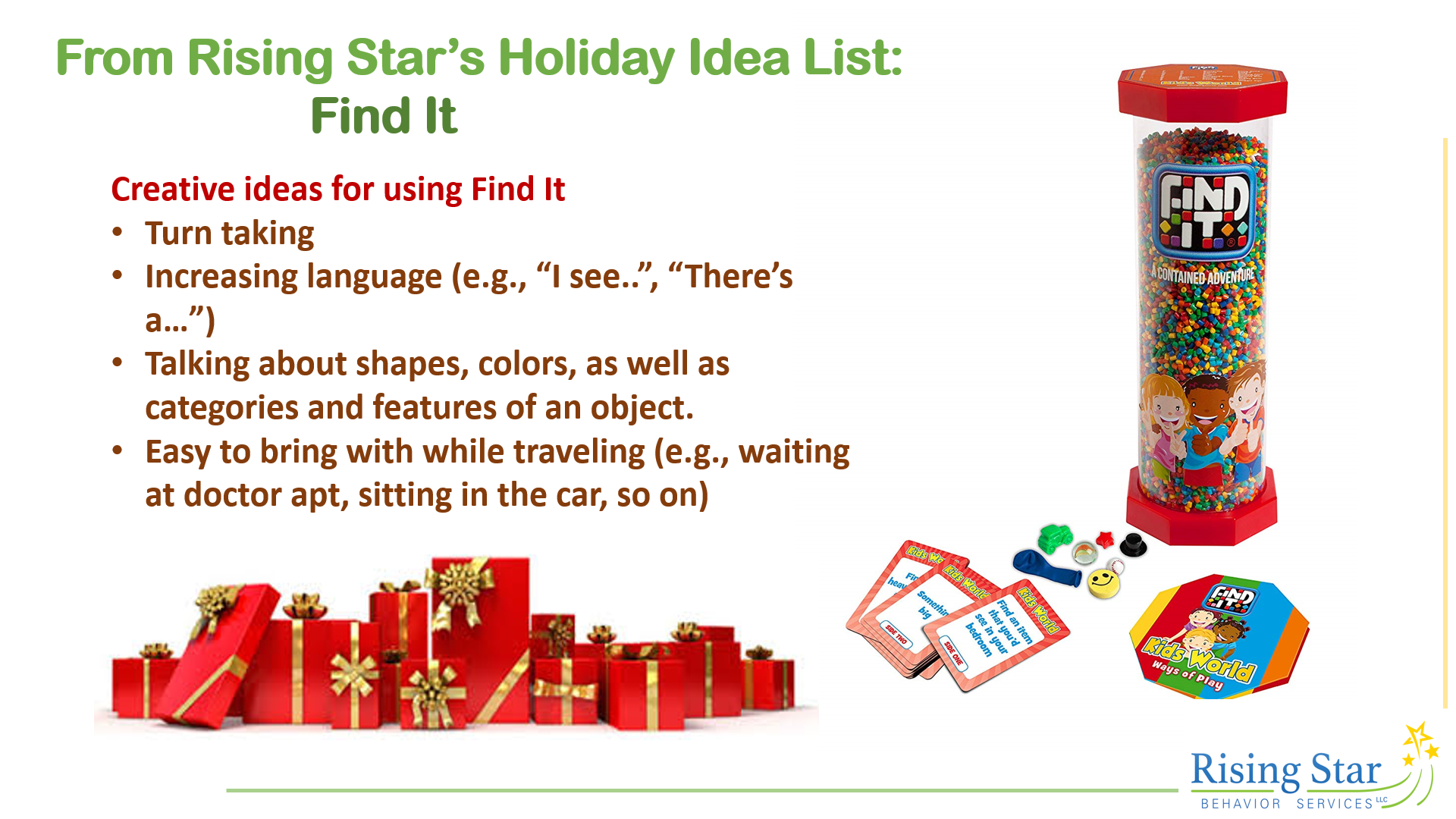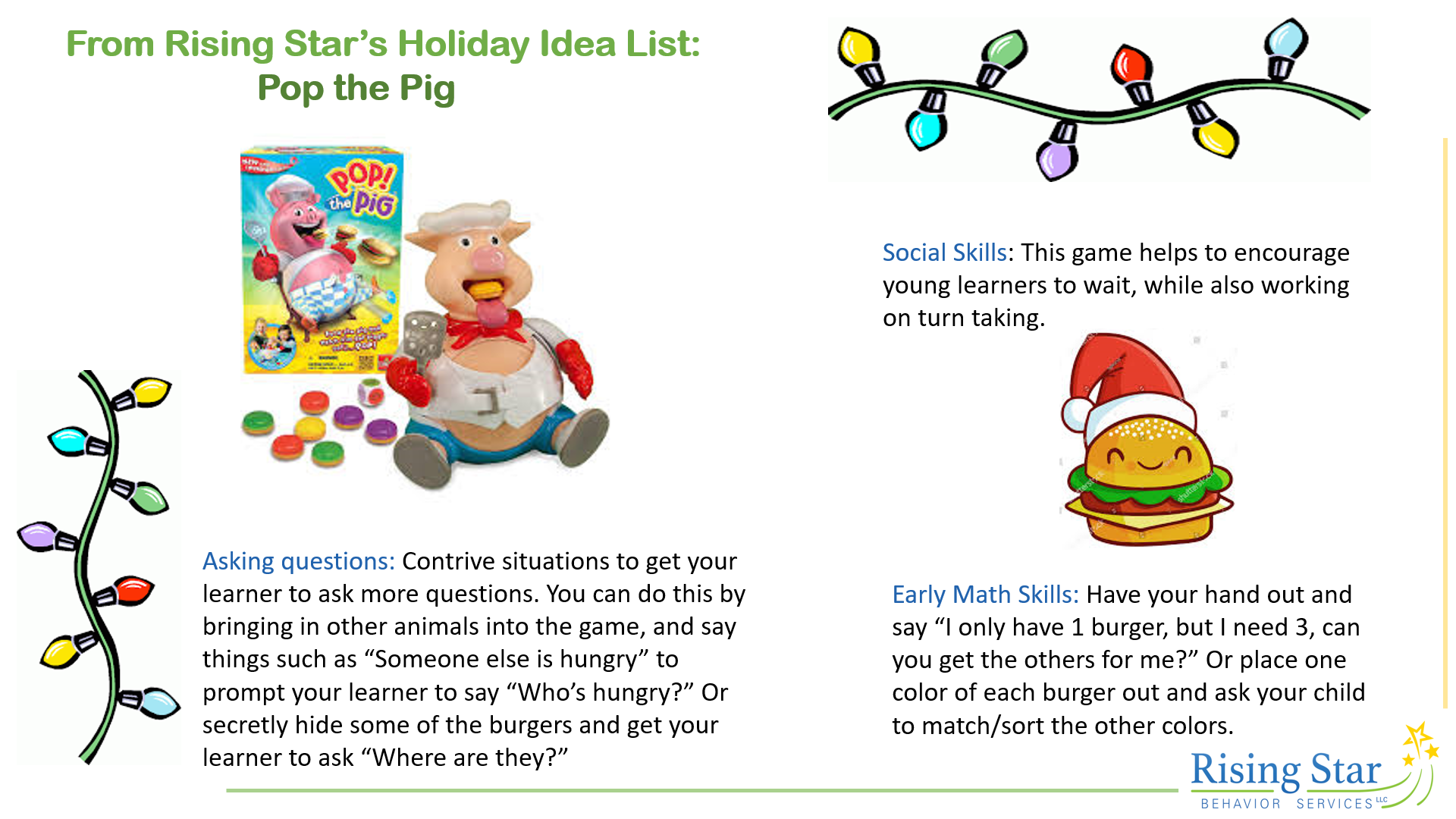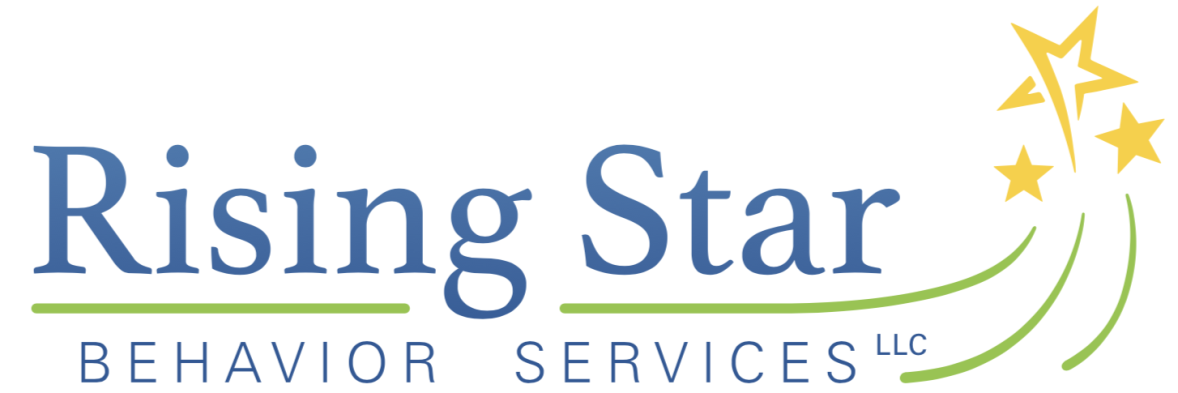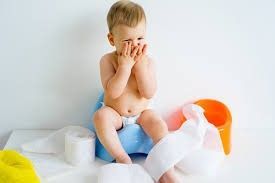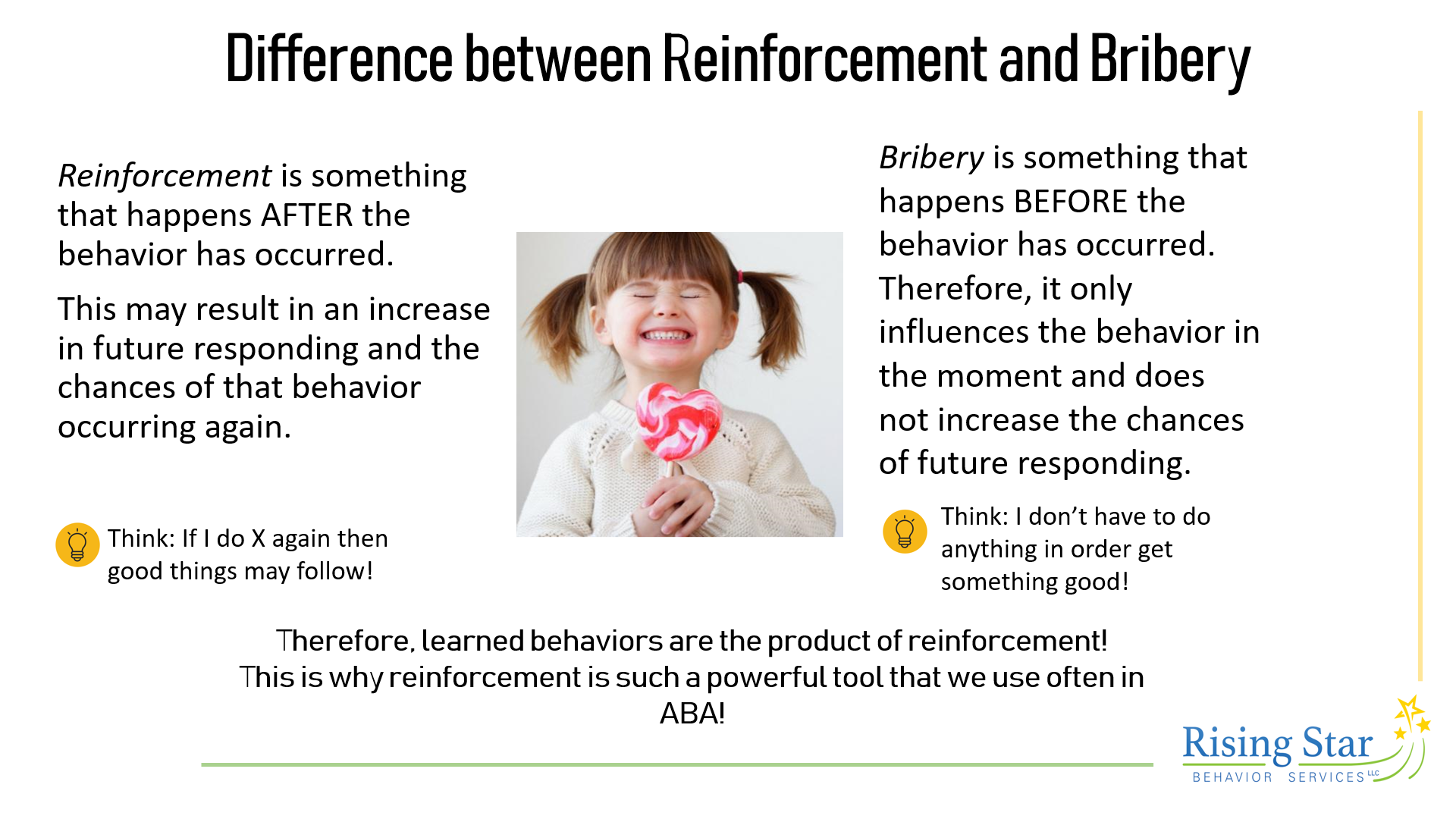Joint Attention
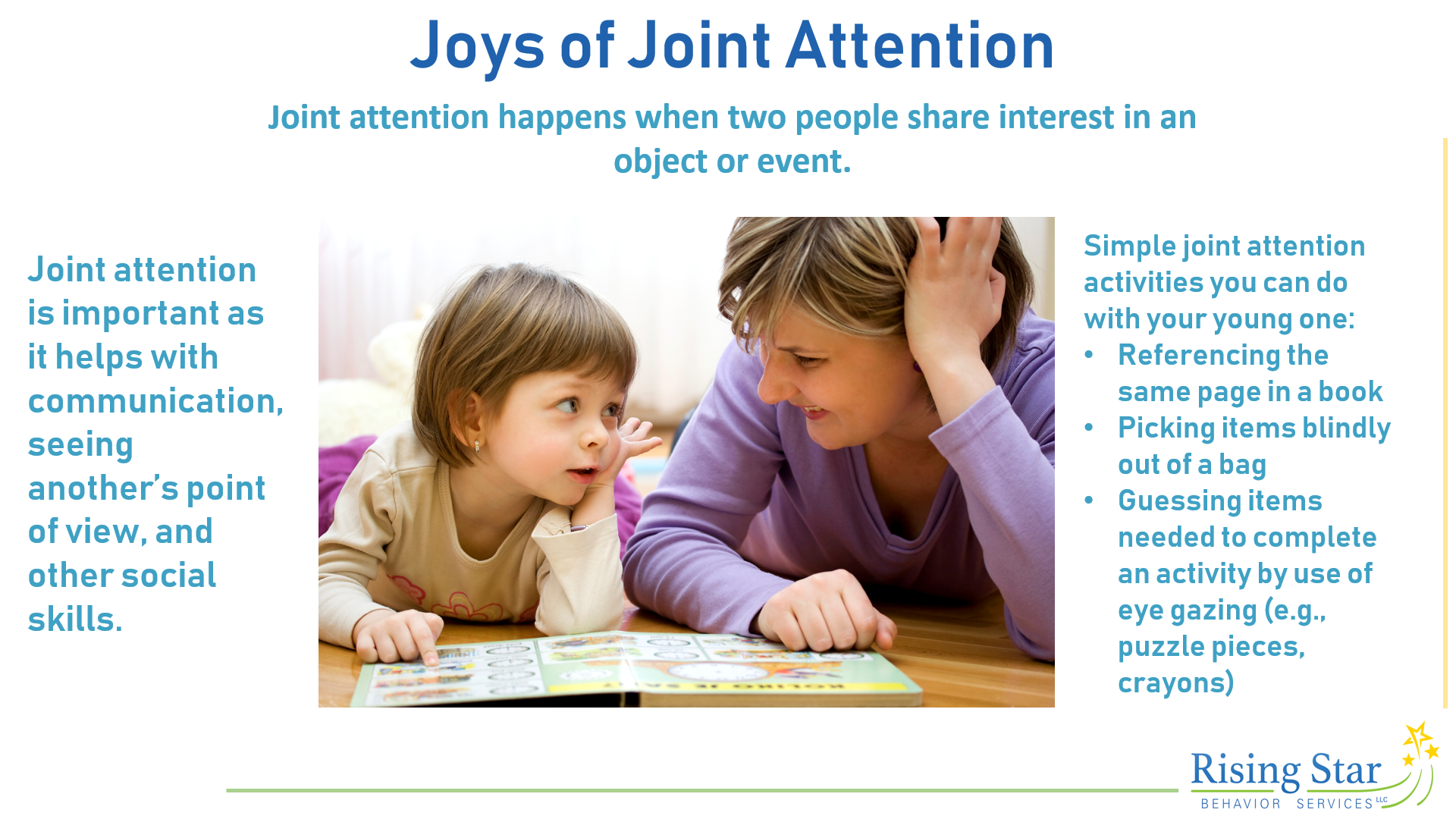
Joint Attention happens when two people share interest in an object or event. This may typically be done through eye gazes, or verbal and non-verbal communication. Some examples of verbal communication may come in the form of gasps or even using statements such as “Look at this!”. The most common form of joint attention done through non-verbal communication is pointing. Typically when a child sees something of interest they may point at, or towards, the object which brings attention to it so that others may share in their excitement!
Joint attention typically develops in young children between the ages of 8 and 10 months old. However, many children with ASD do not develop this skill on their own and may need some additional supports in order to fully grasp it. Some reasons why it’s important to include joint attention goals for our learners is because it can help increase communication, see another person’s point of view, and help with other social skills.
Below is a list of activities that I have used in Applied Behavior Analysis (ABA) sessions to help increase joint attentions with individuals with autism. You can also use these at home to help your young learner to increase their joint attention skills:
- Referencing the same page on a book – Sit down and do story time with your young one. Try and make it fun and engaging, by pointing to different items in the book. You may even ask your child to point to something too. Always reinforce their pointing by commenting on what they point to by providing statements such as “Oh that’s cool” or “Oh – you found a duck, I see another duck hiding on this page!”
- Picking items blindly out of a bag – You can take a bag, one that you can’t see through, and place a bunch of fun items inside. Be sure to use some of your child’s favorite toys/items. Once you’ve filled it with a few items, be sure to sit across from each other and take turns taking objects out. Once you take something out, you can wrap your hand around it, bring it up to your eye and say “Ohh.. look!” and wait for your child to look at you. Once they do, be sure to show them, and then let them know it’s their turn to pull something fun out of the bag!
- Turn taking – Find an activity such as puzzles, coloring, Legos, etc. Be sure to place a few of the items you need between you and your child. For example, if you are both working to color a picture, place a few different crayons on the table between you. Let your child know that they can’t pick up a crayon until they guess which crayon you want them to use, be sure to tell them they have to guess the right one but you wont use any words to tell them, instead they’ll have to look at your eyes. When it comes time to pick a crayon, be sure to point your eyes down to the crayon you want them to use. If your child guessing incorrectly, point to your eyes and then down to the correct object. Once they figure out which is the correct one, be sure to tell them how amazing they are for guessing the right one!
If you have any more questions on joint attention, or how Rising Star Behavior Services may help assist you, be sure to contact us today. We provide in-home services for children with autism and ADHD in the following counties, and surrounding areas in Colorado: Boulder, Jefferson, Broomfield and Adams.
